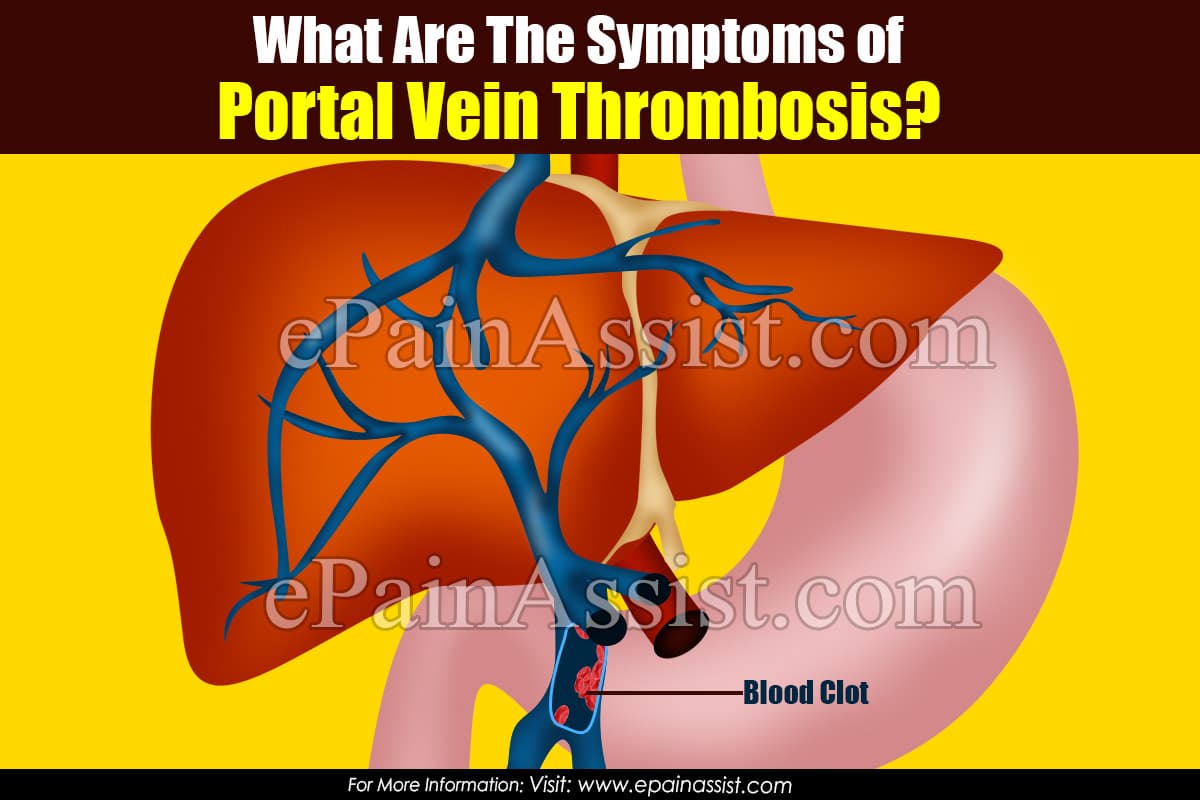Portal vein thrombosis is a blood clot that obstructs or occludes the portal vein either partially or completely. The obstruction can occur over a short period of time (acutely) or over a long period of time (chronically). Portal vein helps in transportation of blood from intestines to liver and is responsible for 75% of blood supply to the liver. It is responsible for collection of blood from intestines, spleen, and carrying it to liver. It is formed by the convergence of superior mesenteric and splenic veins, so it is not uncommon to see portal vein thrombosis concurrently with mesenteric or splenic vein thrombosis. Although, portal vein thrombosis is uncommon to see in general population, it is highly associated with liver cirrhosis and hepatic and pancreatic carcinoma.
Causes of Portal Vein Thrombosis
Portal vein thrombosis can be caused due to either reduced flow of blood or portal hypertension, endothelial disturbance or hypercoagulable state. The most common cause of PVT is cirrhosis and about 1/4 patients with cirrhosis have a tendency to develop thrombosis due to severe scarring of liver. Other causes include hepatocelllular carcinoma, cholangiocarcinoma, gastric carcinoma, pancreatic ductal carcinoma, acute pancreatitis, chronic constrictive pericarditis, chronic heart failure, Budd-Chiari syndrome, polycythemia vera, appendicitis, abdominal surgery, ascending cholangitis, umbilicus (navel) infection in newborns, antiphospholipid syndrome, dehydration, inflammatory bowel disease, myeloproliferative disorders, oral contraceptive pills, pregnancy and/or trauma.

What Are The Symptoms of Portal Vein Thrombosis?
Portal vein thrombosis is the most common cause of portal hypertension. A portal vein thrombus can be either a bland thrombus or a tumor (malignant) thrombus. In general, the symptoms of portal vein thrombosis vary from individual to individual. It can range from being asymptomatic and found incidentally, when imaging is done for some other reason to being symptomatic. A minor thrombus will present with symptoms of fever, upper abdominal pain and ascites (abdominal swelling due to excessive abdominal fluid accumulation). In severe cases, there might be splenomegaly with the development of portal hypertension and symptoms include severe abdominal pain, malaise, nausea, vomiting, diarrhea, esophageal varices and gastric bleeding, fever and chills, hematemesis, pain in the liver (in the right upper quadrant), jaundice and tarry, bloody and foul smelling stools.
Most of the symptoms in severe portal vein thrombosis are a result of pre-hepatic portal hypertension due to obstruction of blood flow to the liver and increase in pressure within the portal vein and its branches.
Esophageal varices are abnormal, dilated submucosal veins in the lower third of esophagus. They are mostly associated with portal hypertension occurring due to cirrhosis of liver. The blood supply to the liver is reduced due to excessive scarring of the liver and as a result, more blood flows through the veins of esophagus. The extra blood in the veins of esophagus leads to ballooning of these veins and makes them more susceptible to rupture, thus causing gastric bleeding. The rupture of esophageal vein might also lead to vomiting out of blood. Gastric bleeding might also lead to blood in stools known as melena.
The spread of thrombus into mesenteric vein and mesenteric arches can also lead to intestinal ischemia that requires emergency surgery.
Ascites is the excessive and abnormal accumulation of fluid in the abdominal cavity. The most common cause of ascites is liver cirrhosis and also occurs in portal vein thrombosis, which leads to increased pressure in the hepatic veins due to obstruction of normal blood flow to the liver. Along with increased pressure in portal veins and decrease in albumin, there is fluid accumulation in the abdominal cavity.
Splenomegaly is the enlargement of spleen and can again be caused by portal hypertension due to thrombus in the portal vein or due to thrombus in the splenic vein. In this blood backs up within the spleen causing entrapment of blood cells including red blood cells, white blood cells and platelets, thus causing anemia and thrombocytopenia.
The treatment of portal vein thrombosis is aimed at identifying the cause and managing symptoms.
Also Read:
